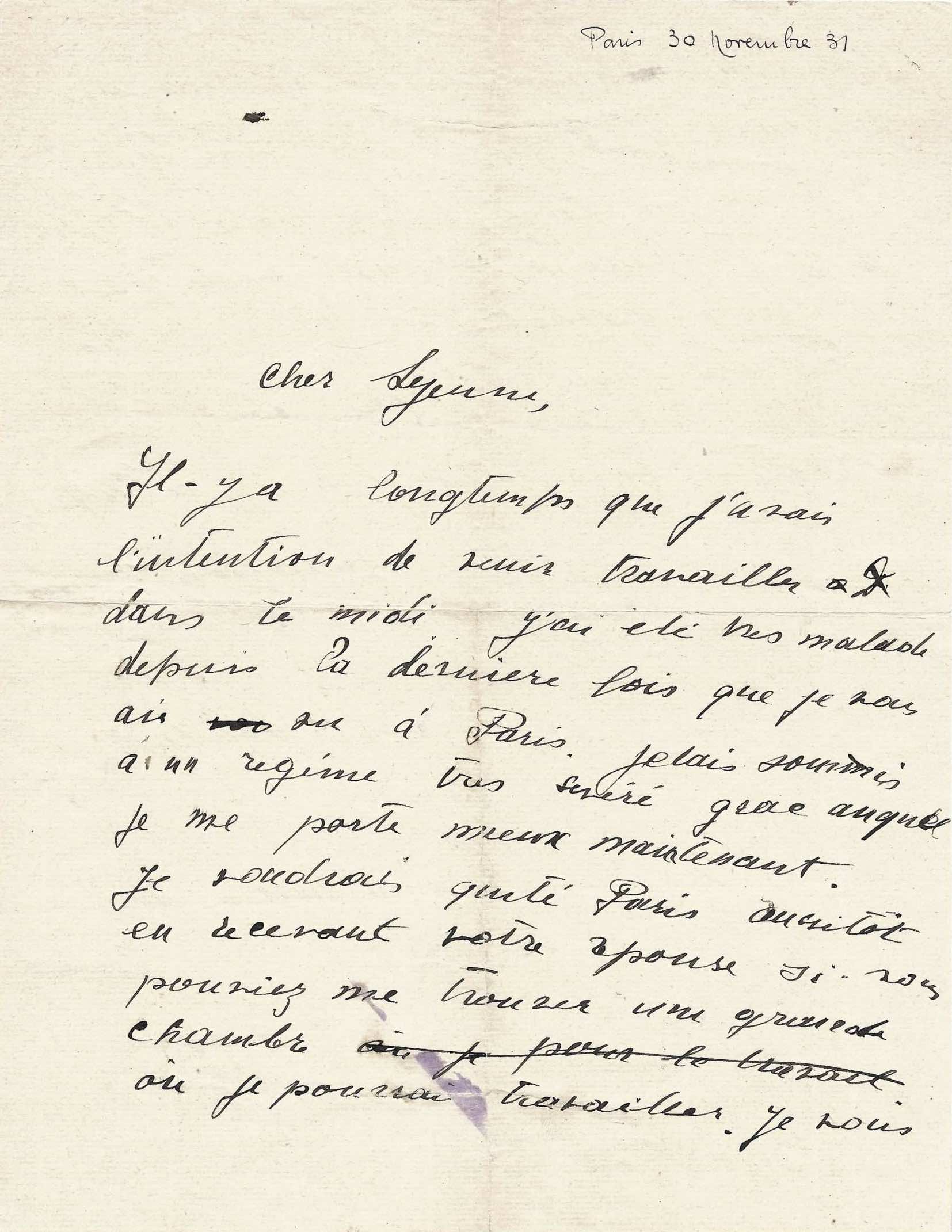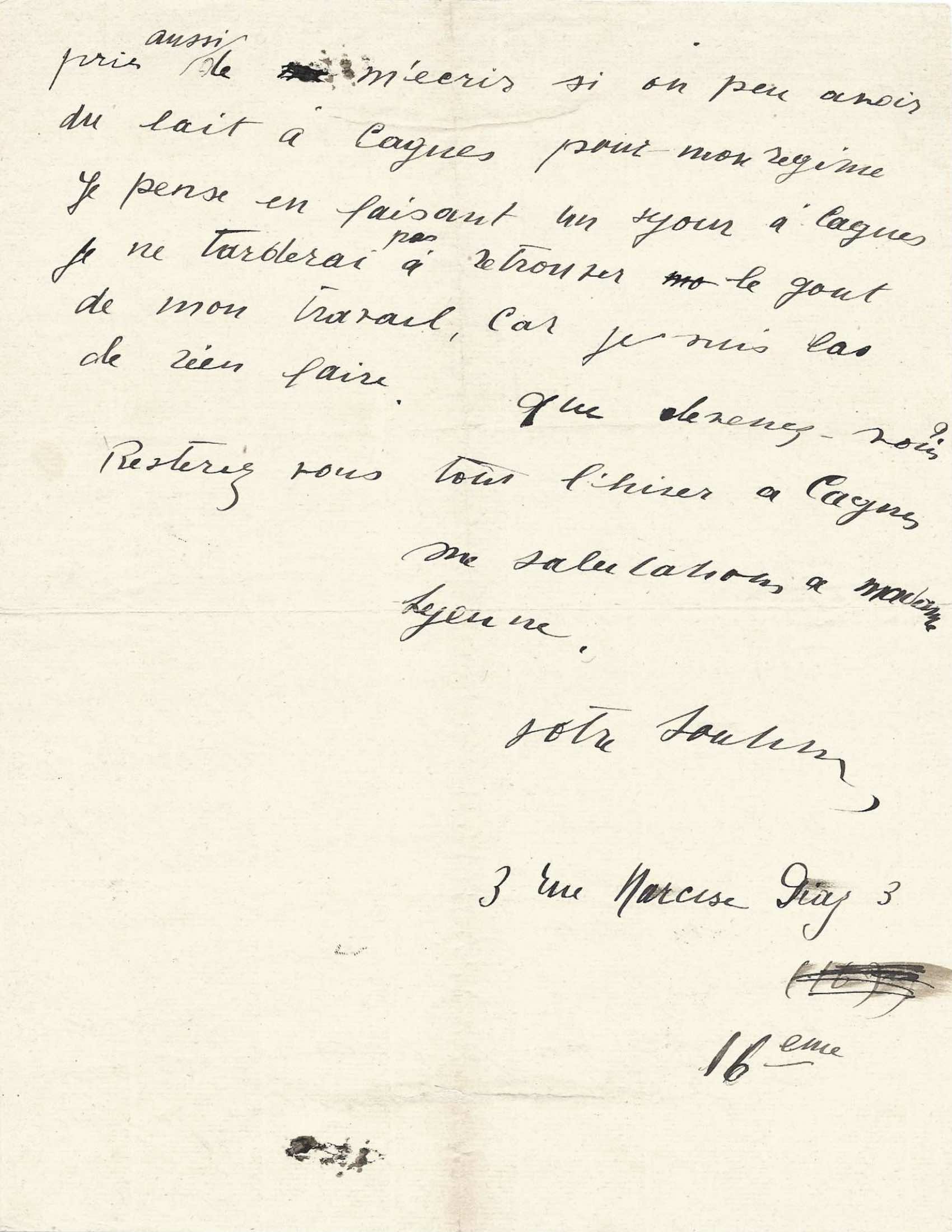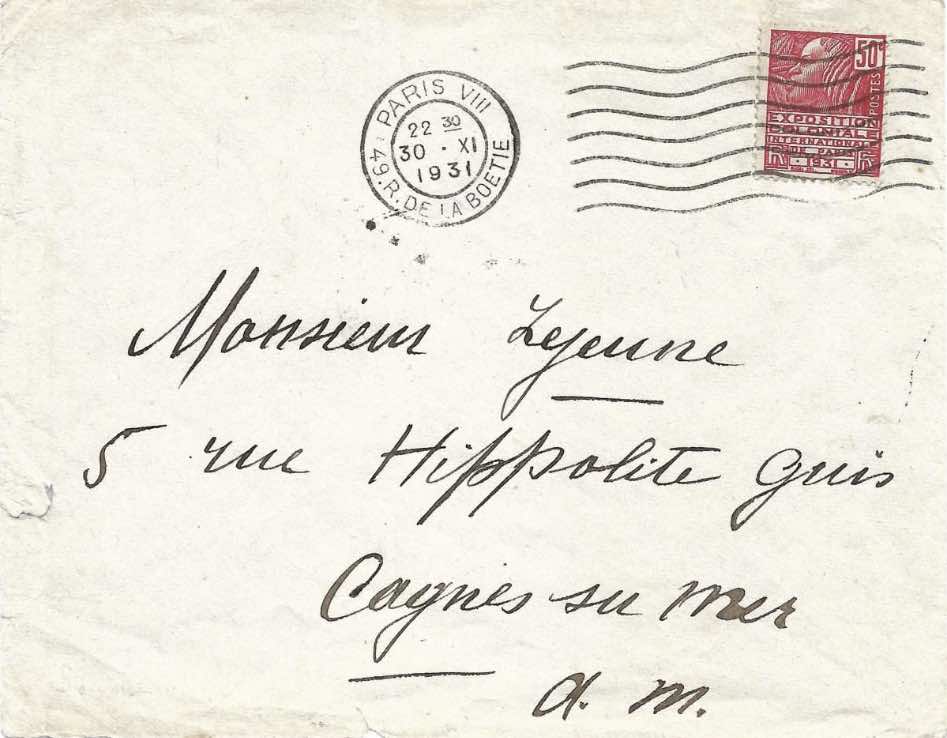Chaïm SOUTINE (1893.1943).
Autograph letter signed to Émile Lejeune.
Two pages in-4°. Autograph envelope.
Paris. November 30, 1931 (date added by another hand)
“It won't be long before I get a taste for my work again, because I'm tired of doing nothing. »
Soutine, sick and idle, wishes to join his friend Lejeune in the South in order to find his pictorial inspiration.
________________________________________________
“Dear Lejeune, I have been meaning to come to work in the south for a long time. I have been very ill since the last time I saw you in Paris. I was put on a very strict diet, thanks to which I am doing better now.
I would like to leave Paris immediately upon receiving your response if you could find me a large room where I can work. Please also write to me if we can have milk in Cagnes for my diet. I think by staying in Cagnes I will soon regain the taste for my work, because I am tired of doing nothing.
What are you becoming? Will you stay all winter in Cagnes? My greetings to Mrs. Lejeune. Your Soutine , 3 rue Narcisse Diaz. 16th »
________________________________________________
In 1931, Soutine had already benefited, since the mid-1920s, from the recognition of the art world and collectors despite his complicated relationships with his patrons as well as with the very idea of success or fortune.
The Slavic painter's health problems had serious consequences on his pictorial production. At the time when he resided at La Ruche, eaten away by vermin and penniless, Soutine had in all likelihood been carrying a tapeworm. This caused him to develop a stomach ulcer, which worsened over the years. In fragile health, Soutine had invented diets based on milk and potatoes but was nonetheless forced, on several occasions, to have to stop painting for weeks or even entire months.
Hoping to rediscover the taste for work in the South, the artist asked his friend the painter Émile Lejeune to find him a room which would serve as his studio. However, we can be surprised by the desire that motivated him to return to Cagnes, he who wrote in 1923 to the art dealer Zborowski wanting to “leave Cagnes this landscape [that] he could not bear [sic]”.
A close friend of Soutine, Modigliani, Picasso and Matisse, Émile Lejeune (1885-1964), painter of Geneva origin, owned a workshop in the Montparnasse district where, between 1916 and 1919, numerous events bringing together bohemian artists were held. .
Lejeune is immortalized in one of Soutine's most famous portraits: Portrait of a Man (Emile Lejeune), painted in 1923 and today kept at the Musée de l'Orangerie under the inventory number FR196394.



